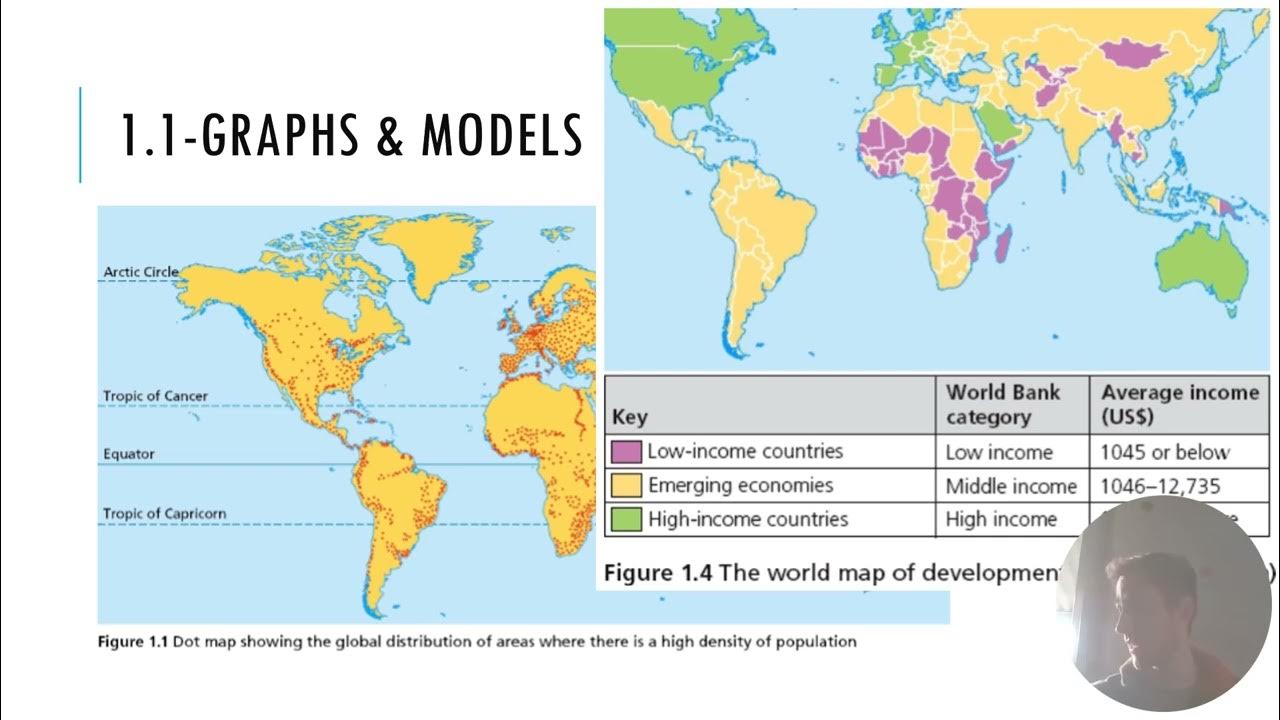Overview of demographics | Society and Culture | MCAT | Khan Academy
Summary
TLDRThis video script explores key sociological concepts such as urbanization, population dynamics, demographic transition, globalization, and social movements. It covers how urbanization reshapes societies, the factors influencing population growth or decline, and the stages of demographic transition. The script also delves into globalization's impact on cultures and economies, along with the theories surrounding it. Lastly, it examines social movements, their theories, and their role in societal change. This insightful summary ties together how these concepts shape the world and society today, offering a broad understanding of the interconnected forces driving modern changes.
Takeaways
- 😀 Urbanization involves people moving from rural areas to cities, creating both benefits (cultural hubs) and challenges (inequality, crime).
- 😀 Population dynamics examines how populations grow or shrink over time due to fertility, migration, and mortality rates.
- 😀 The population pyramid categorizes a population by age and gender, revealing the overall demographic health of a country.
- 😀 Demographic transition consists of five stages, from high birth and death rates to eventual population stabilization or decline.
- 😀 Globalization involves the exchange of ideas, cultures, and products across borders, driven by technological advancements and interdependence.
- 😀 Theories of globalization include World Systems Theory, which divides countries into core, periphery, and semi-periphery regions, and Modernization Theory, which advocates for equal development opportunities globally.
- 😀 Transnational corporations (TNCs) play a significant role in globalization by seeking cheaper materials and labor across borders.
- 😀 Social movements can be activist (seeking change) or regressive (resisting change), impacting society by challenging or maintaining the status quo.
- 😀 Relative deprivation theory suggests social movements arise when people feel a sense of inequality or deprivation, while resource mobilization theory emphasizes the need for organizational resources to drive change.
- 😀 Social movements can either fade away or succeed and become integrated into society, altering norms and behaviors in the long term.
- 😀 The effects of globalization and social movements are interconnected, influencing cultural, economic, and political landscapes on a global scale.
Q & A
What is urbanization, and how is it perceived from different sociological perspectives?
-Urbanization is the movement of people from rural to urban areas. From a functionalist perspective, cities are both positive (cultural and diverse) and negative (crime). Conflict theory views cities as sources of inequality, where the elite exploit the poor. Symbolic interactionism sees cities as hubs of culture with strong norms and values.
What are the factors influencing why people move to urban areas?
-People move to urban areas for various reasons such as job opportunities, better utilities, and easier access to essential services like hospitals and schools.
What is the role of suburbs and exurbs in urbanization?
-Suburbs are residential areas on the outskirts of cities that offer a more peaceful environment while still maintaining proximity to urban centers. Exurbs are affluent areas beyond suburbs, often with economic centers that reduce the need to commute long distances into the city.
What is gentrification, and how does it relate to urban renewal?
-Gentrification occurs when urban renewal leads to higher property values, forcing out lower-income residents who can no longer afford to live in the area.
What is demographic transition, and what are its stages?
-Demographic transition is the shift from high birth and death rates to low birth and death rates in a population. The stages include: Stage 1 (high birth and death rates), Stage 2 (declining death rates), Stage 3 (declining birth rates), Stage 4 (low birth and death rates), and Stage 5 (speculative, possibly stable or declining population).
How does a population pyramid represent demographic trends?
-A population pyramid shows the distribution of a population by age and gender. An expansive pyramid indicates high birth and death rates, a stationary pyramid suggests low birth and death rates, and a constrictive pyramid reflects low birth rates and higher proportions of elderly people.
What is the formula for calculating population growth rate?
-The population growth rate is calculated by taking the initial population, adding the number of births, adding the number of immigrants, subtracting the number of emigrants, and subtracting the number of deaths. If the result is higher than the initial population, the growth rate is positive.
What is globalization, and how does it affect different countries?
-Globalization is the process of sharing ideas, cultures, services, and products across national borders, facilitated by technological advancements. It impacts economies and cultures, making countries more interdependent but also leading to challenges such as inequality and competition for labor.
What are the key theories of globalization?
-World Systems Theory divides countries into core, semi-periphery, and periphery regions. Modernization Theory suggests that all countries can develop in similar ways, while Dependency Theory argues that poorer countries remain underdeveloped due to global economic inequality. Other theories focus on culture, social networking, and politics.
How do social movements impact society, and what are the key types of social movements?
-Social movements are organized efforts to promote or resist social change. Activist movements aim to create change, while regressive movements resist it. The environmental movement is an example of an activist social movement. Social movements can lead to lasting changes or fade away, depending on their success.
What is the relationship between resource mobilization theory and social movements?
-Resource Mobilization Theory emphasizes that successful social movements require resources, such as funding, leadership, and public support, to effectively organize and achieve their goals.
Outlines

此内容仅限付费用户访问。 请升级后访问。
立即升级Mindmap

此内容仅限付费用户访问。 请升级后访问。
立即升级Keywords

此内容仅限付费用户访问。 请升级后访问。
立即升级Highlights

此内容仅限付费用户访问。 请升级后访问。
立即升级Transcripts

此内容仅限付费用户访问。 请升级后访问。
立即升级浏览更多相关视频

Sociology Series - [Week 13] - What is demography? Population dynamics? (1)

Terminologi ilmu kependudukan

The Contemporary World | Global Demography

Aula 03 Dinâmica Populacional Brasileira

Finnian & Mr. Carley Review IB Geo Unit 1 (Part 1)

Penduduk sebagai Sumber Daya Manusia #geography #geografi #kurikulummerdeka #erlanggaofficial
5.0 / 5 (0 votes)
